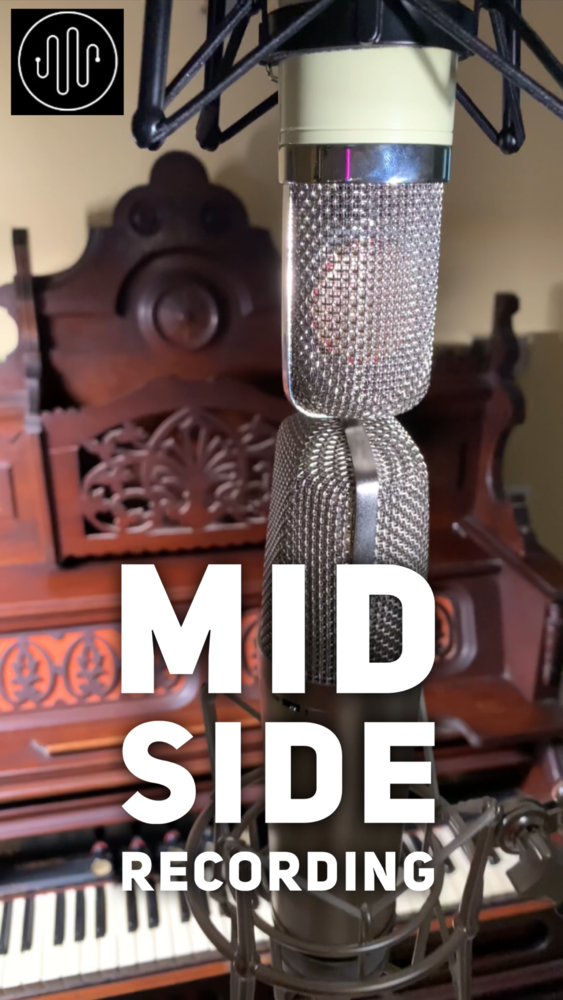There’s a reason we teach mid-side recording, and it isn’t because it sounds good, although that’s one of the reasons we like to use it. We teach it because understanding it requires you to wrap your head around how the fragile elements of the stereo field intersect. Point this directional mic at a source, as if it were a pistol, and take its mono signal.
Send it to the left and right channels, and you perceive it as coming out the middle. That’s what you get when you pan to the center. That’s the mid component in a mid-side array.
Capturing left and right using MS involves a single microphone, listening simultaneously in two directions, and as it turns out, a mic in figure 8 converts pressure from one side as positive voltage and as negative as it swings the other way. Take that signal, make two copies of it, invert the polarity of one of them, and pan them left and right, and you achieve an impossibly wide signal. It’s borderline unusable because as those signals combine, either electrically or acoustically, they null.
In other words, they start to cancel each other, but inject our original mono signal into the hole we created in the center, and we mitigate the cancellation, resulting in a stereo image with a strong mono component, effectively replacing the stuff that’s getting canceled. Now, there’s nuance to this that won’t fit in 90 seconds, like the spacing and position of the mic capsules, but I like this technique because it’s mono-friendly, it’s flexible, you can widen it later if you feel like living a little dangerously. But other benefits are that your mid-microphone isn’t off-axis, none of this looking sideways stuff, and your microphones don’t need to be matched, and it’s an efficient way to capture something like an array of three horn players using two microphones.
Okay, not a lot of time left to advertise our classes, but if you do know somebody who wants to take one, what to do.

